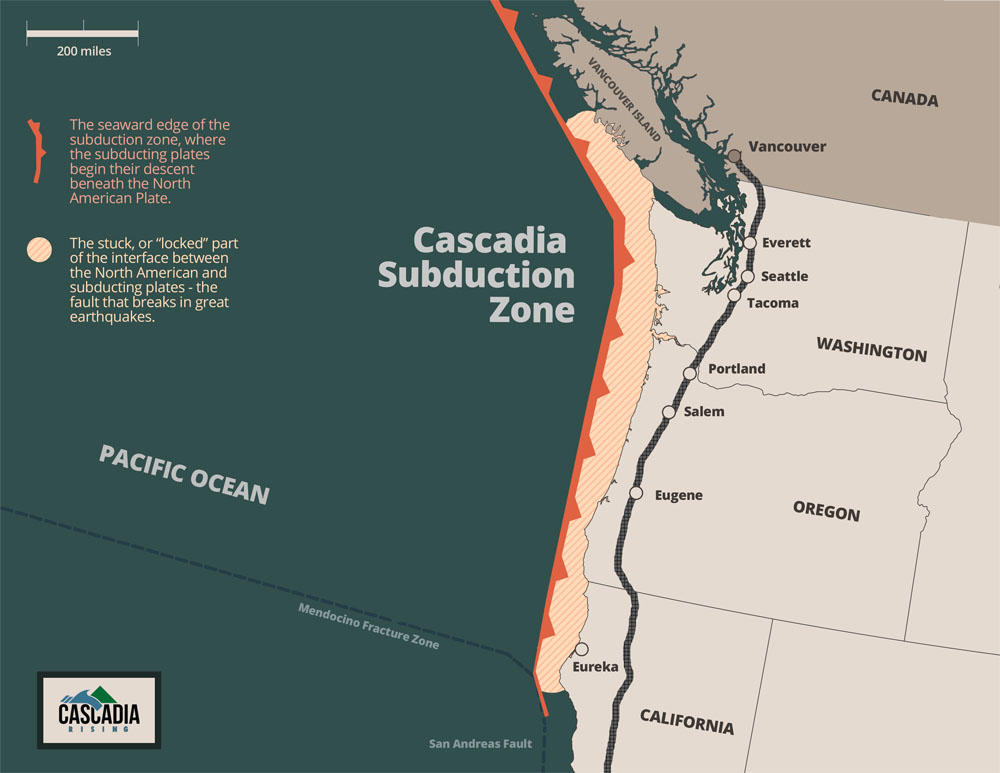By David Jacobson, Temblor
Check your seismic hazard rank

In a report released yesterday, the City Club of Portland outlined various steps that should be taken to ensure that the city can quickly bounce back following a large earthquake. Rather than addressing what needs to be done after a quake, this report highlights several ways to mitigate risk, and empower communities. In total, five sectors were identified as the “linchpins of resilience.” Each of these have low cost options which can be taken to ensure that Portland both minimizes damage in a large earthquake, and reduces the time it takes to recover.

Portland, Oregon lies approximately 210 km (130 mi) from one of the largest, most hazardous faults in the world, the Cascadia Subduction Zone. This 1,000 km-long fracture stretches from Cape Mendocino in Northern California, to Vancouver Island in Canada. When this fault ruptures in M=9.0 earthquakes, the region experiences violent shaking, and deadly tsunamis are triggered. The last time this happened was on January 26, 1700. When it next happens, parts of Portland will liquefy, landslides will be triggered, and shaking will cause significant damage to buildings, homes, and infrastructure. Therefore, doing anything to mitigate these effects is essential.

The five “linchpins of resilience” outlined in the report are fuel, buildings, lifelines, people, and coordinated planning and investment in resilience. While a detailed description of these can be found here, we thought we’d give a quick overview of key recommendations.
First, in what is described as Portland’s “Achilles heel,” the state’s supply of fuel will likely be lost into the adjacent Willamette River. Approximately 90% of the state’s fuel supplies are kept in tanks that will likely tilt or rupture due to the liquefiable soil they rest on. If these tanks rupture, their contents will spill into the Willamette River, resulting in a catastrophic environmental problem. Therefore, it is urged that soil-strengthening techniques be investigated. Another problem that is unique to Portland is that the city is cut in half by the Willamette River, which thousands of residents cross on their daily commute using one of nine bridges. It is essential that at least one of these bridges remain operational following a Cascadia earthquake. Therefore, significant retrofitting of bridges is highly recommended. Similarly, it is suggested that older masonry buildings be retrofitted to meet current seismic codes, and that at the time of purchasing a home, residents are provided with a seismic resilience disclosure. Undertaking such a task will hopefully prevent collapse and loss of life.

The last two recommendations focus more on societal and public relations. The Portland City Club suggests that designated governments staff members be devoted towards resilience and that they should coordinate with local governments to ensure all communities be aware of regional planning. Additionally, it is recommended that schools should provide earthquake risk materials to students and their parents in an attempt to raise awareness.
While this report is for Portland, the hazards and mitigation recommendations are not unique to the city. Numerous large cities along the West Coast are at risk from large earthquakes and must prepare for them in an attempt to reduce the impact they have on society.
References
Portland City Club
KGW
- Beware quiet segments of the Philippine Fault - May 16, 2025
-
ډیری عوامل افغاني ټولنې د زلزلې پر وړاندې زیانمنوي
- August 11, 2022 - What’s happening this week in Humboldt County, California: The squeeze - February 6, 2019
